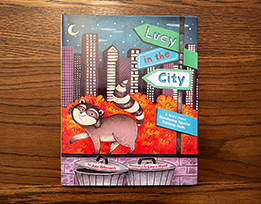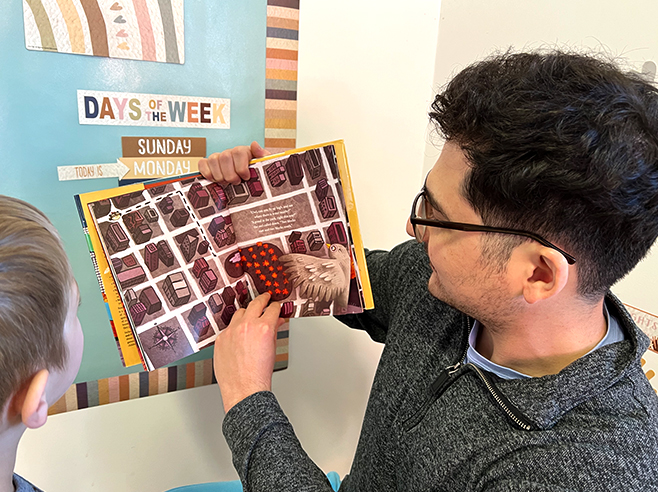When Lucy is lost, she gets help from the owl, who has a bird’s eye view of the city.
Materials

- Lucy in the City by Julie Dillemuth
Preparation
- Read the story to children at least once before doing this activity.
- Look through the book to identify pages that show a bird’s eye (or aerial) view: that’s when the owl flies above the city and looks down on it to give Lucy directions. Then find pages that show the ground view: that’s Lucy’s view from the ground. Your goal in this lesson is to help children begin to recognize the difference between these two points of view.
Directions
- Before Rereading: Ask children what they remember about the story.
- While Reading:
- Pause each time Lucy asks the owl to fly above the city to help her with directions. What does the owl see when he flies above the city? How is it different from what Lucy sees down below? (From up above, the owl can see many city streets and the landmarks Lucy remembers (the movie theater, pond, bakery) and can tell her which way to go. From down on the ground, Lucy can only see the street she’s on and the buildings around her. The owl can see much more.)
- Tell children the owl has a bird’s eye view: a bird can fly high above the city and look down on it. Lucy has a ground view: she can only see how things look from the ground.
- Find a page that shows buildings from Lucy’s perspective and another page that shows them from the owl’s perspective. Have children compare how the buildings look. (Lucy can see the sides of the buildings from the ground up; looking down from up high, the owl can see the top of the building as well as their sides.)
- After Reading: Turn to the two-page spread of the city at the end of the book. Ask children what view this map shows. Is it a bird’s eye or a ground view, and why do they think that?
